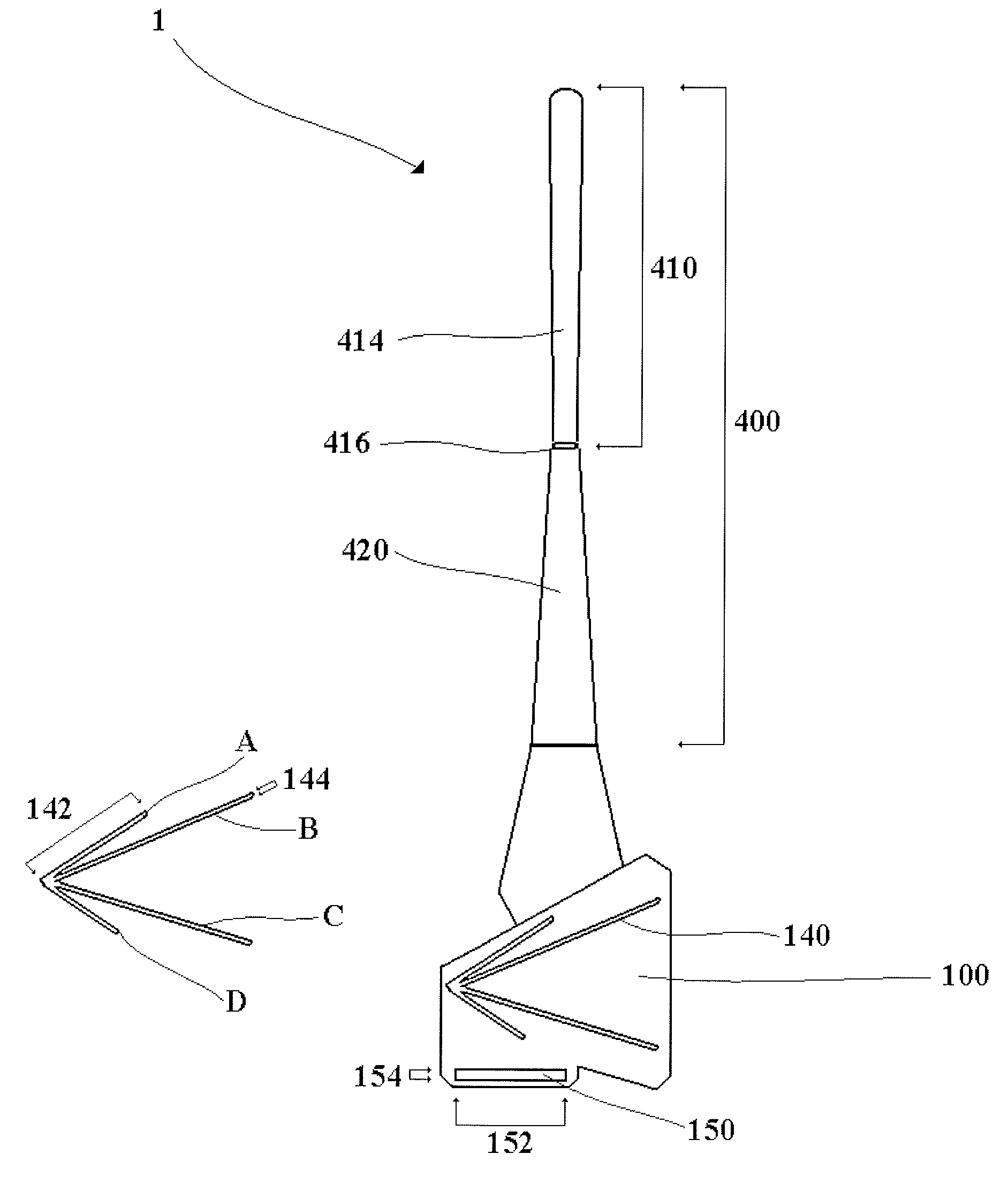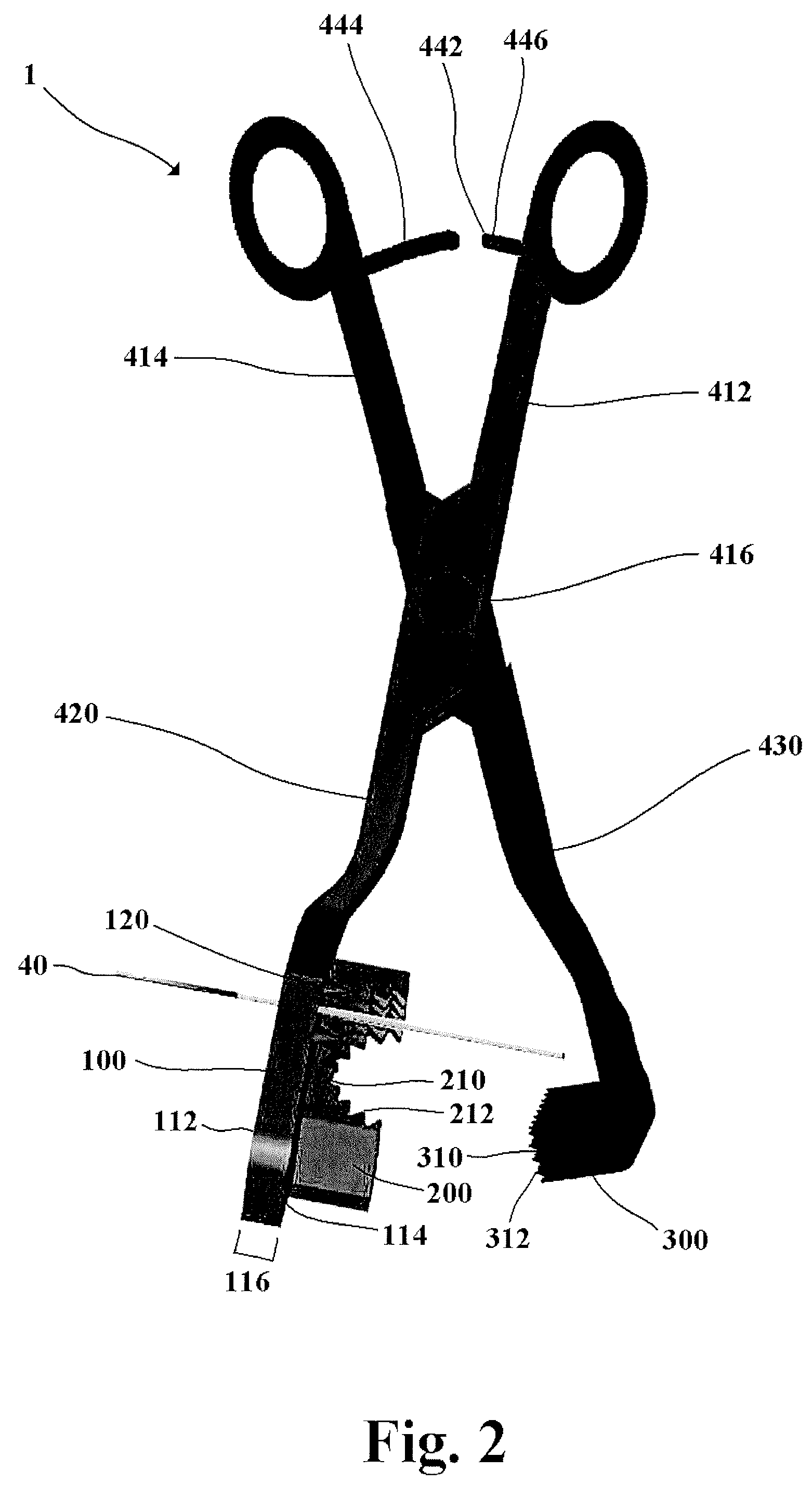Self-supporting osteotomy guide and retraction device and method of use
a self-supporting, osteotomy technology, applied in non-surgical orthopedic devices, surgical saws, medical science, etc., can solve the problems of guide deficiency of requiring additional instruments to secure the guide to the surgical site, and achieve the effect of reducing the number of independent retractors
- Summary
- Abstract
- Description
- Claims
- Application Information
AI Technical Summary
Benefits of technology
Problems solved by technology
Method used
Image
Examples
Embodiment Construction
:
[0025]The present invention is an improved osteotomy guide and retraction device 1 to be used by a surgeon during a bunionectomy procedure. See FIG. 2. The device 1 is suitably adapted to be removably attached to the neck 14 of a metatarsal bone 10 to guide a cutting blade 40 into and through the head 12 of the metatarsal 10 as part of the bunionectomy procedure.
[0026]The device 1 comprises four principle components: a guide plate 100, a primary metatarsal engagement device 200, a secondary metatarsal engagement device 300, and a clamp 400. See FIG. 2. These components are integrated with each other, with the guide plate 100 and the secondary metatarsal engagement device 300 depending from the clamp 400 and the primary metatarsal engagement device 200 depending from the guide plate 100. The clamp 400 is suitably adapted to position the primary metatarsal engagement device 200 and the secondary metatarsal engagement device 300 toward and away from each other and is further suitably ...
PUM
 Login to View More
Login to View More Abstract
Description
Claims
Application Information
 Login to View More
Login to View More - R&D
- Intellectual Property
- Life Sciences
- Materials
- Tech Scout
- Unparalleled Data Quality
- Higher Quality Content
- 60% Fewer Hallucinations
Browse by: Latest US Patents, China's latest patents, Technical Efficacy Thesaurus, Application Domain, Technology Topic, Popular Technical Reports.
© 2025 PatSnap. All rights reserved.Legal|Privacy policy|Modern Slavery Act Transparency Statement|Sitemap|About US| Contact US: help@patsnap.com



